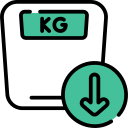Q. How is breast reduction surgery performed?
Doctor Answer is medically reviewed by SecondMedic medical review team.
Breast reduction surgery, also known as reduction mammoplasty, is a surgical procedure performed to reduce the size of excessively large breasts. The surgery is typically conducted by a board-certified plastic surgeon and involves the following steps:
1. Anesthesia: You will be administered anesthesia to ensure you are comfortable and pain-free during the procedure. The options include general anesthesia (where you are unconscious) or intravenous sedation with local anesthesia.
2. Incision: The surgeon will make incisions on the breasts, following a predetermined pattern. The choice of incision pattern depends on your specific case and the surgeon's preference. Common incision patterns include:
- Anchor or Inverted T: This incision goes around the areola, vertically down to the breast crease, and horizontally along the crease.
- Lollipop: This incision goes around the areola and vertically down to the breast crease.
- Donut: This less common incision encircles the areola.
3. Tissue Removal: Excess breast tissue, fat, and skin are removed through the incisions. The surgeon reshapes the remaining breast tissue to create a more proportionate breast size and shape.
4. Nipple and Areola Repositioning: If necessary, the surgeon repositions the nipple and areola to a higher location on the breast to suit the new breast shape. They are usually left attached to their blood supply to maintain sensation and blood flow.
5. Closing Incisions: The surgeon carefully closes the incisions with sutures. The resulting scars can vary depending on the technique used, but they are typically located around the areola and extend downward, hidden within the natural contours of the breast.
6. Dressings and Bandages: The surgical team will apply dressings and bandages to protect the incisions. A surgical bra or compression garment may be provided to minimize swelling and provide support during the initial stages of healing.
7. Drains (if necessary): In some cases, small drainage tubes may be placed to remove excess fluids that can accumulate during the early stages of healing. These are usually temporary and will be removed later.
After the surgery, you will be closely monitored in a recovery area before being released to go home. It's essential to follow your surgeon's post-operative care instructions to ensure a smooth and successful recovery. The recovery process can vary, but most patients can gradually return to their normal activities within a few weeks.
Please note that the specific details of the procedure may vary based on the patient's individual needs and the surgeon's techniques. It's important to discuss the procedure in detail with your surgeon to understand how it will be performed in your case.











